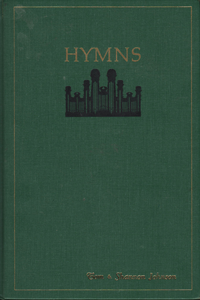Seven Methods of Classification in a Hymnbook
 After I wrote my post exploring alternative classification schemes, I was flipping through a hymnbook and noticed there are seven different methods of classification for the hymns:
After I wrote my post exploring alternative classification schemes, I was flipping through a hymnbook and noticed there are seven different methods of classification for the hymns:
- Authors and Composers
- Titles, Tunes, and Meters
- Tune Names
- Meters
- Scriptures
- Topics
- First Lines and Titles
[gallery]
How cool is that. Some of those classifications are obviously geared towards organists. And these classifications are tucked away in the back of the book rather than the front (as if added as an afterthought). Personally, I think they could have even divided them into other, more playful groups -- such as the following:
- Hymns by Popularity (always sung, sometimes sung, rarely sung, obscure)
- Hymns by Emotional State (weepy, dirges, solemn, thoughtful, energetic, hopeful, upbeat, rockin')
- Hymns Published by Date (ancient, dark ages, pre-industrial, modern, post-modern)
- Hymns Common in Other Faiths (Catholic, Protestant, Jewish, Muslim)
- Hymns by Special Occasion (for funerals, holidays, sacrament, baptisms, weddings, conferences, birthdays)
- Hymns by Famous Favorites (favorites of Gordon Hinckley, Joseph Smith, King David, Jimmer Fredette)
- Hymns by Event Types (sung at temple dedications, firesides, prophetic successions, transfigurations, martrydoms)
All of these organizations are more appealing to me than a topic-based organization of hymns. When choosing hymns, one doesn't necessarily think, I'd like to sing a hymn on the topic of X. Just as in a help file, one doesn't always say, I'd like to see all help files on the topic of X. Of course it all depends on the "product," but if you look creatively enough, you can find myriad ways to dissect and organize it.


